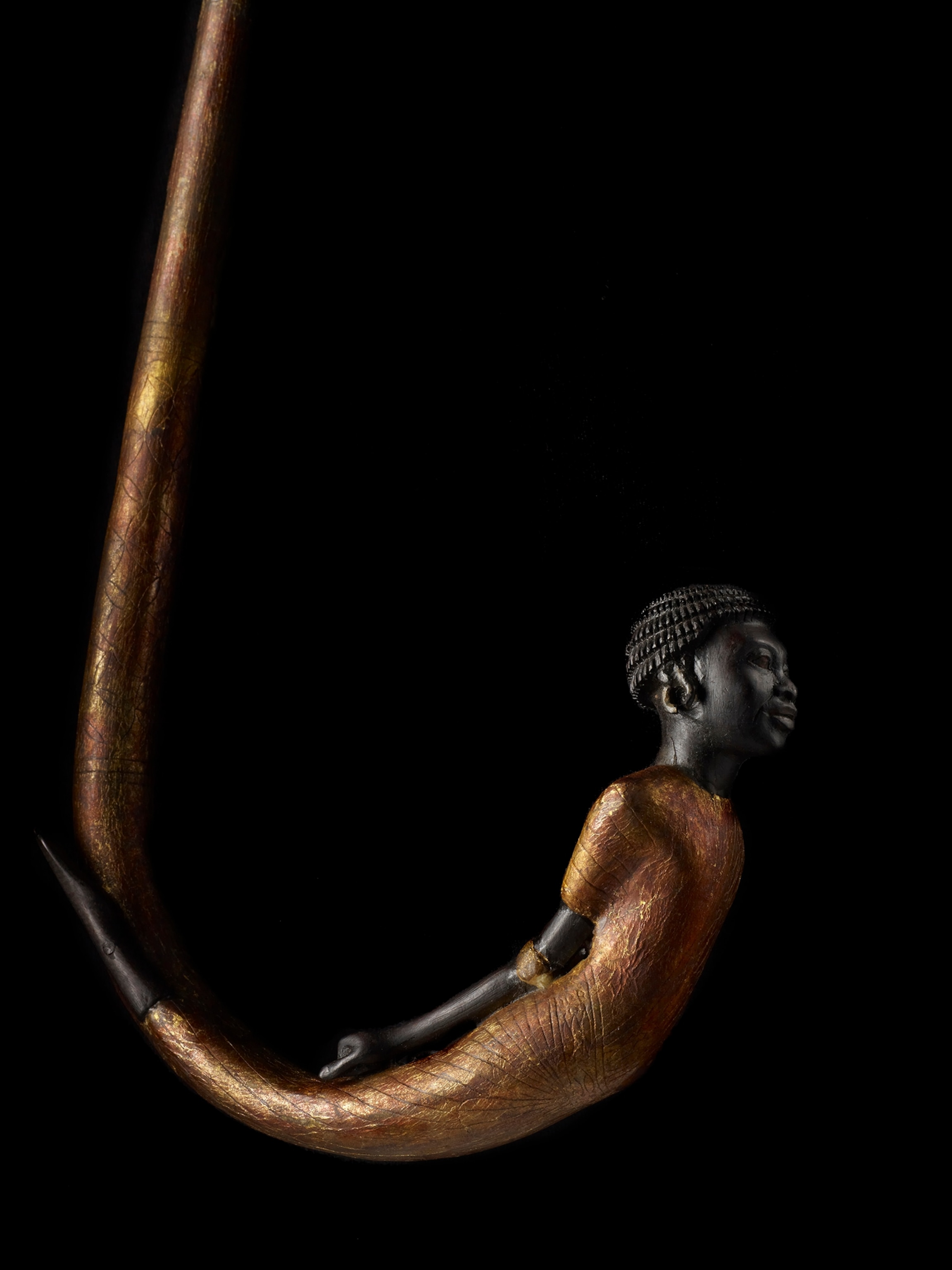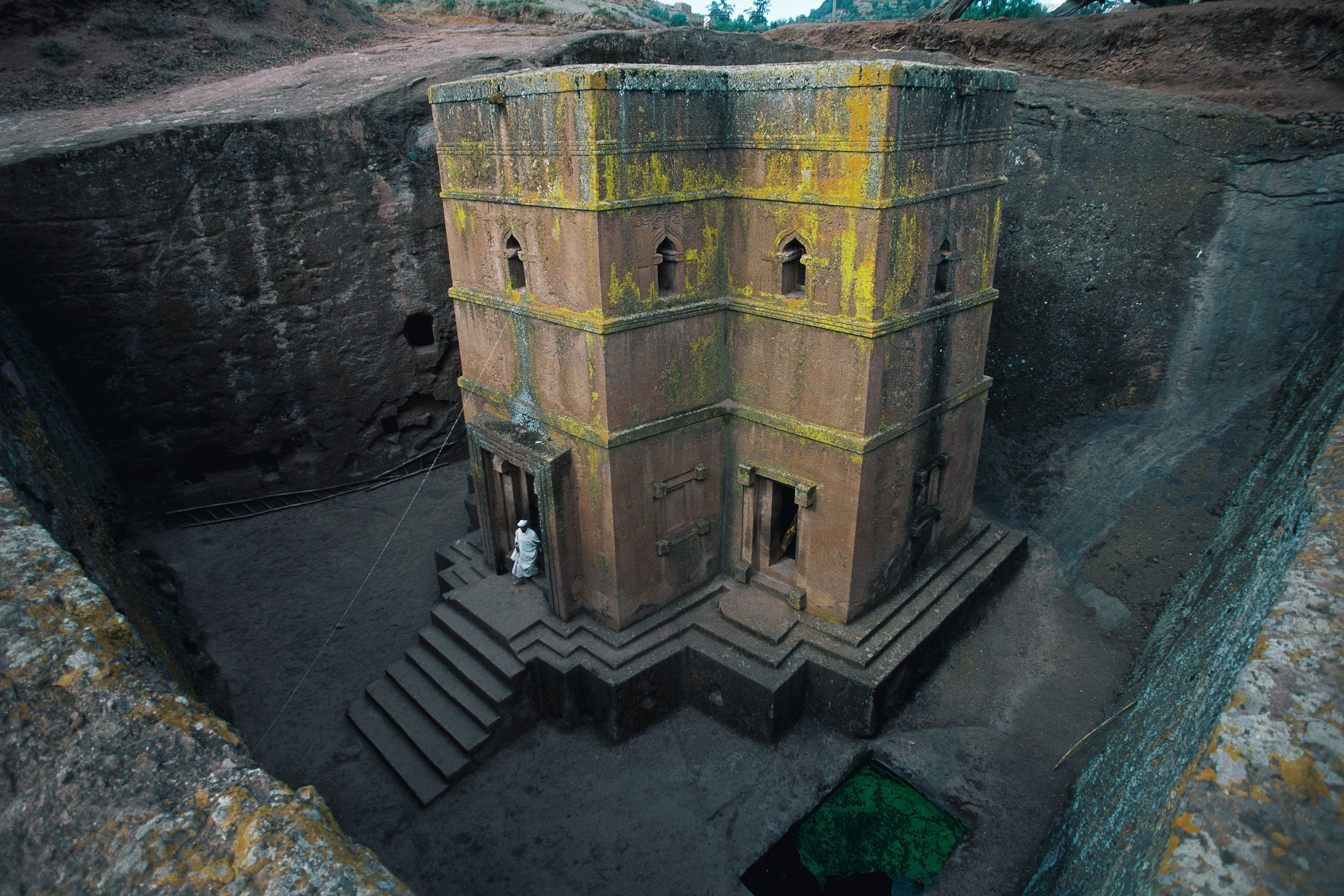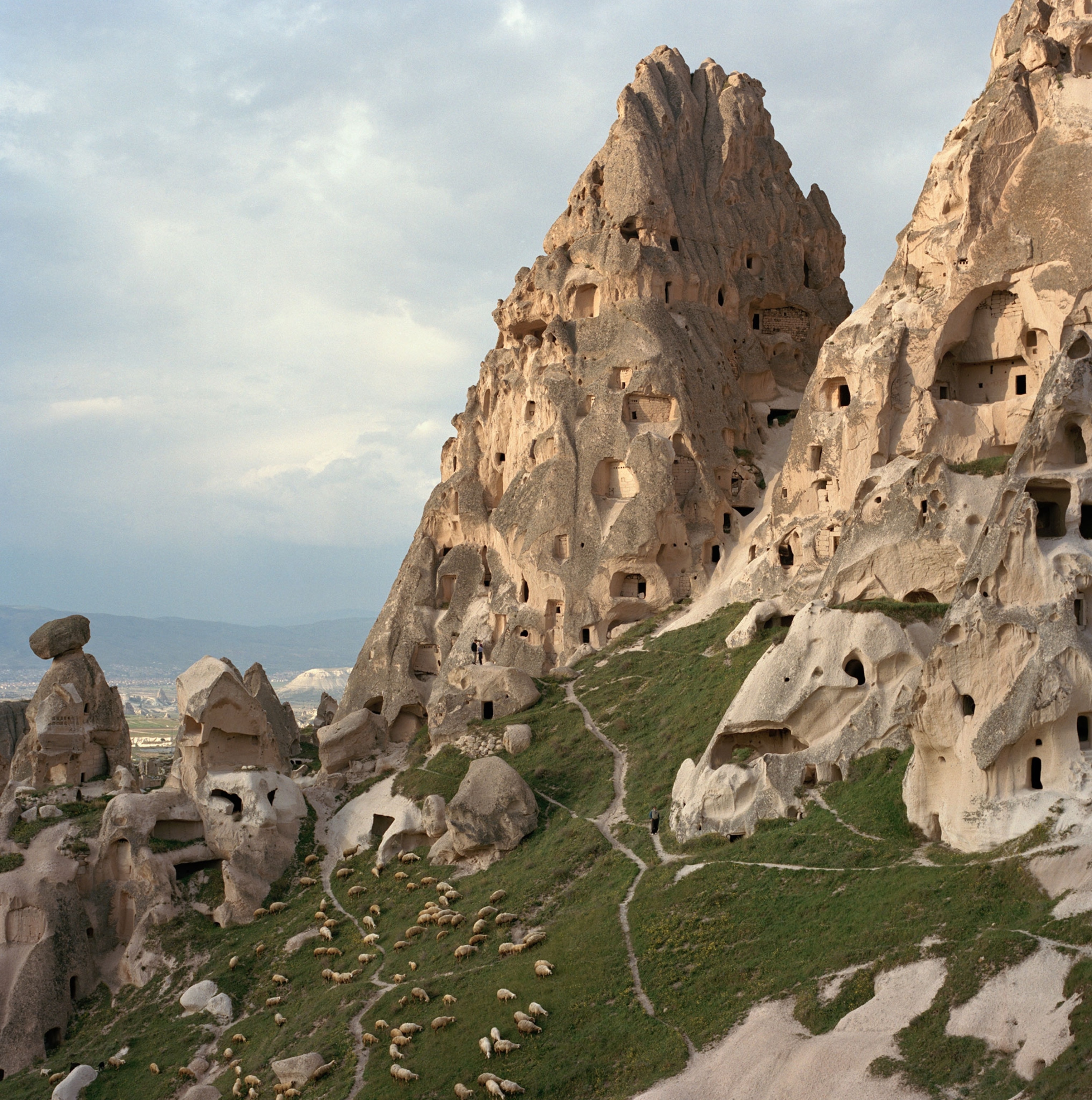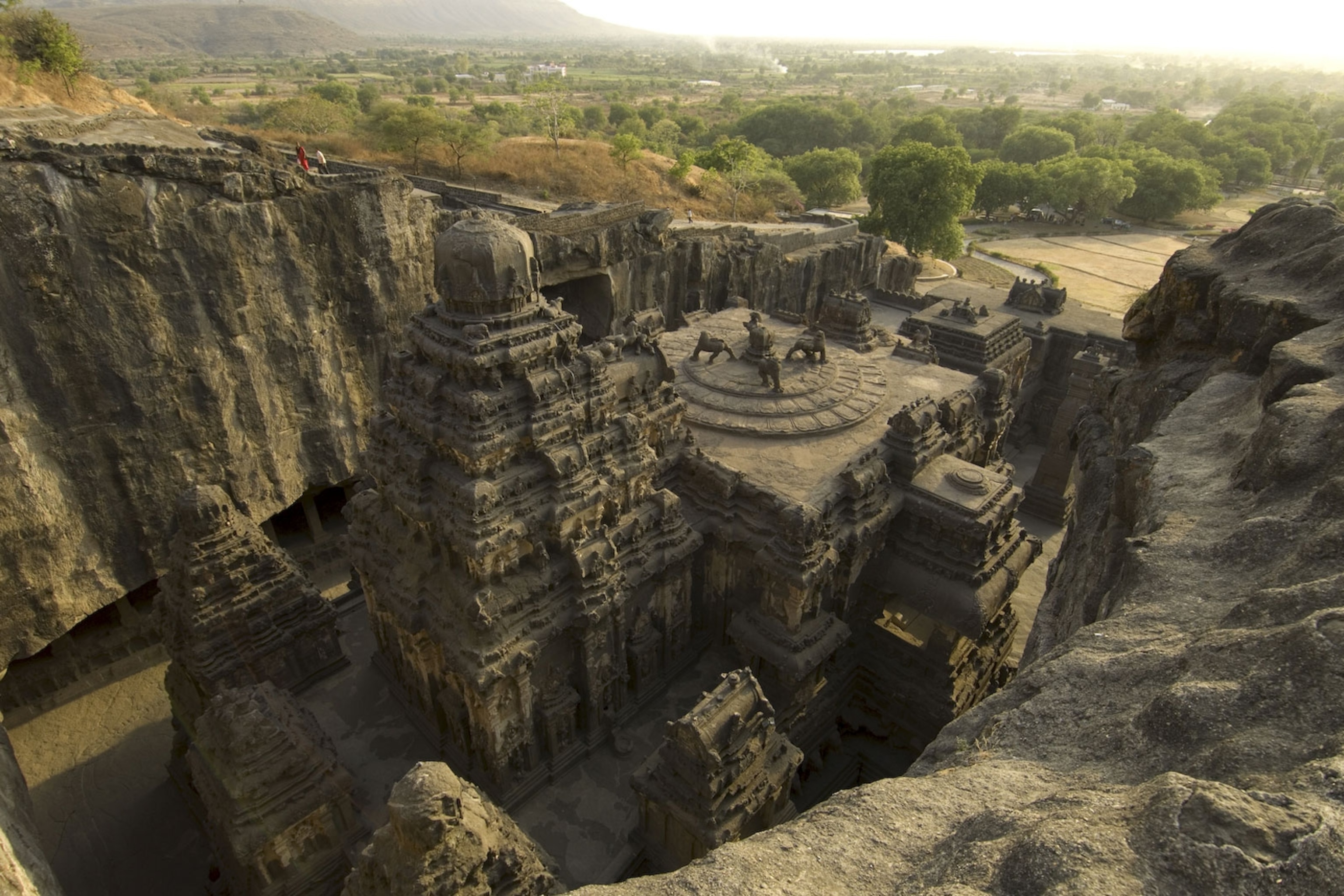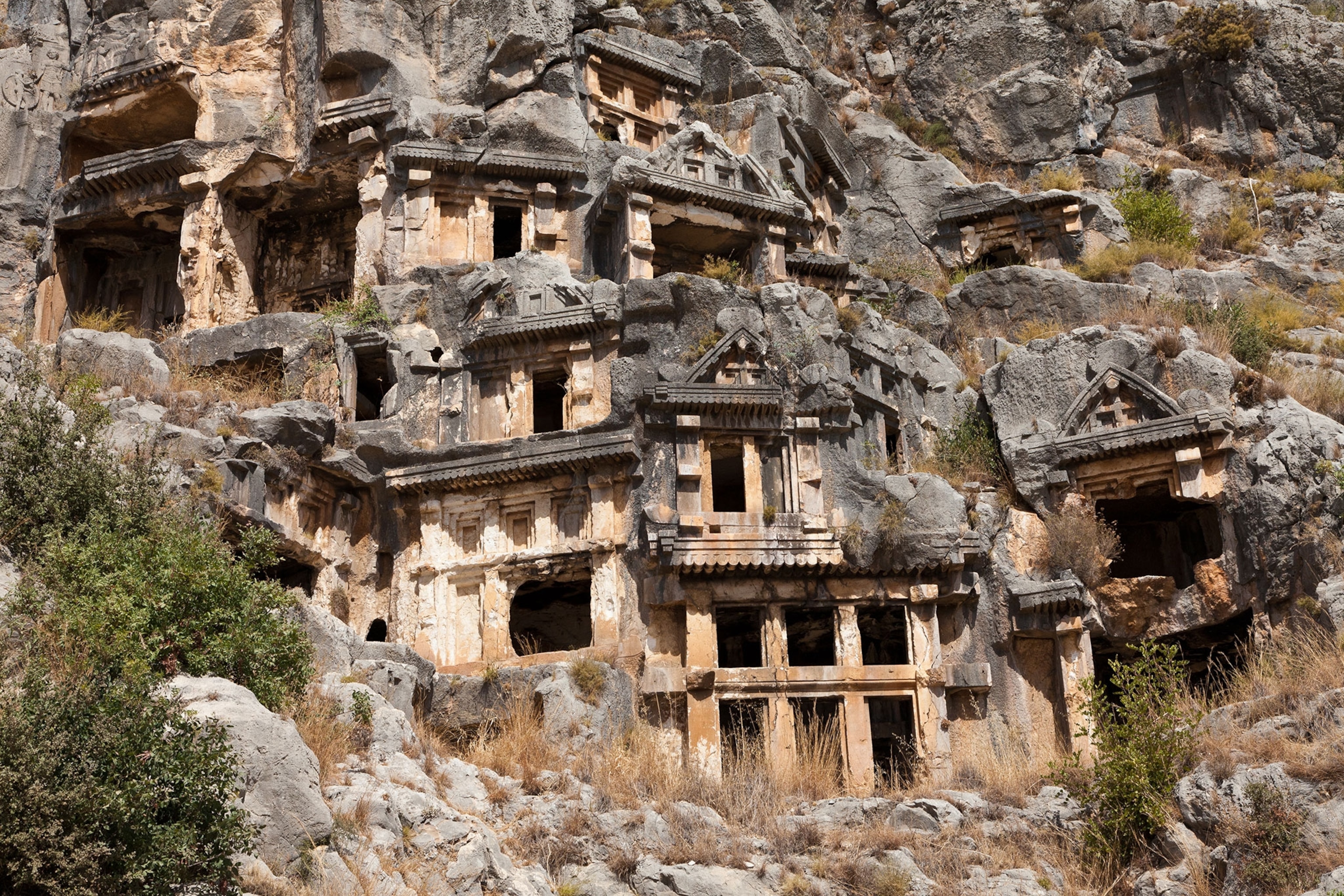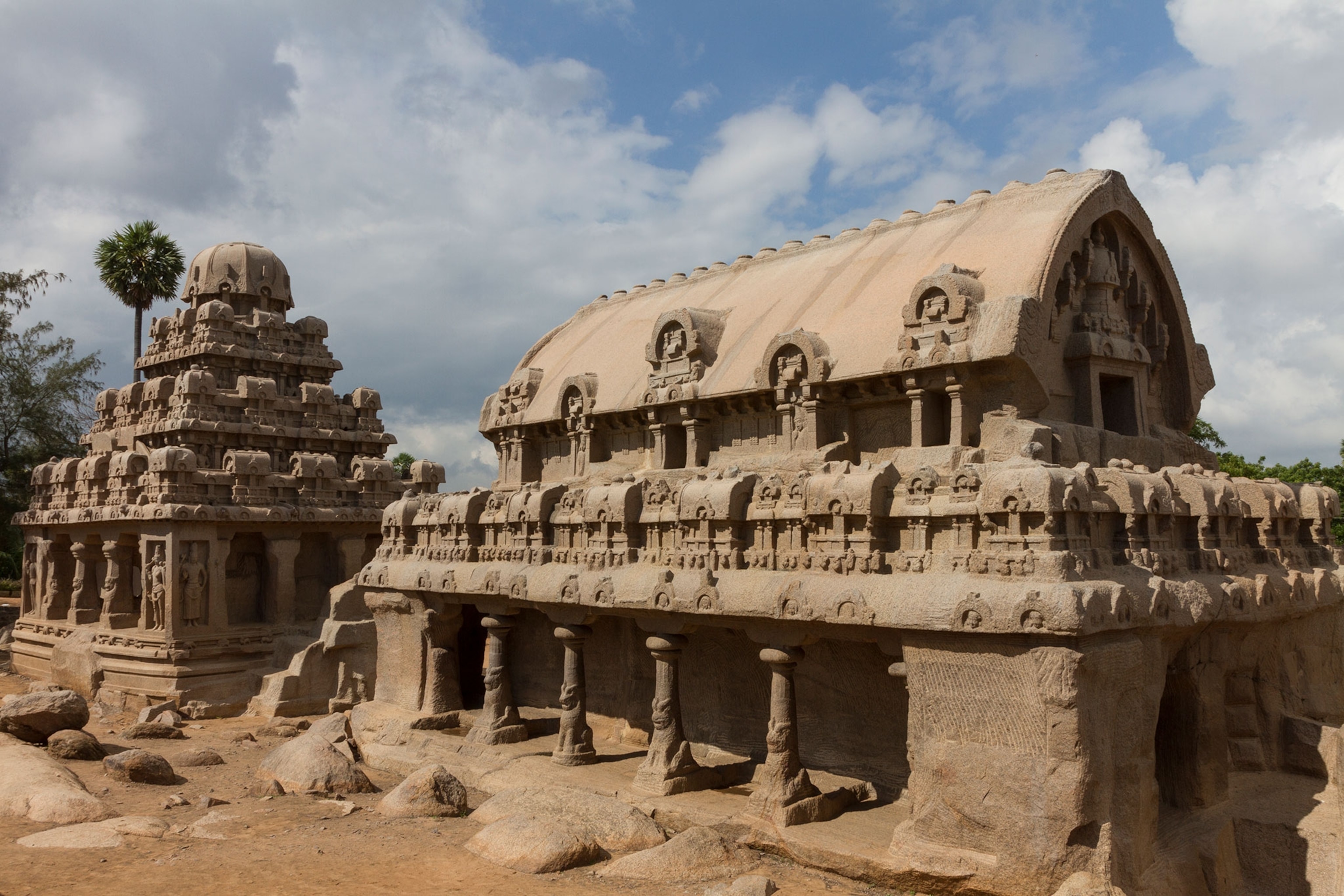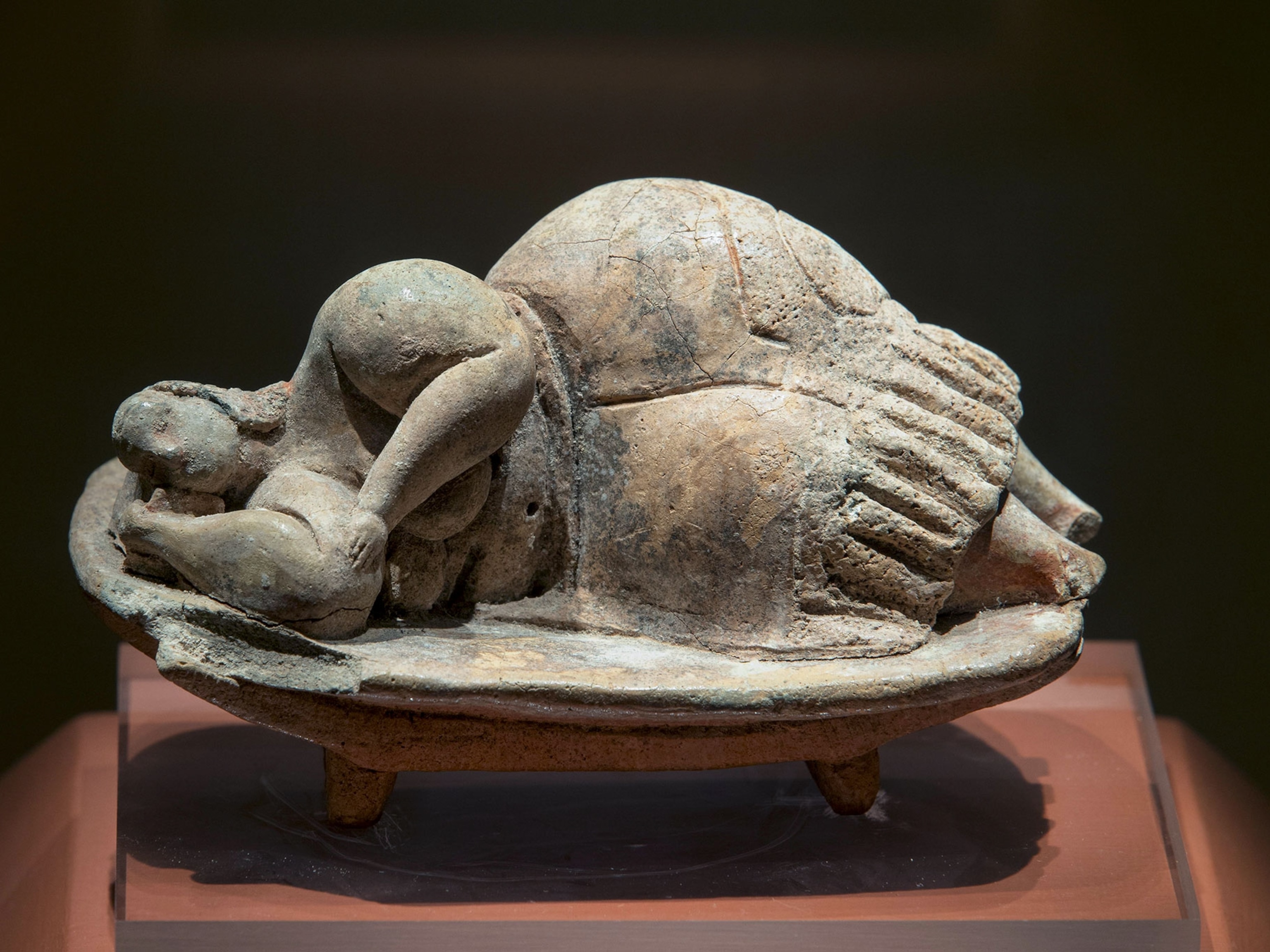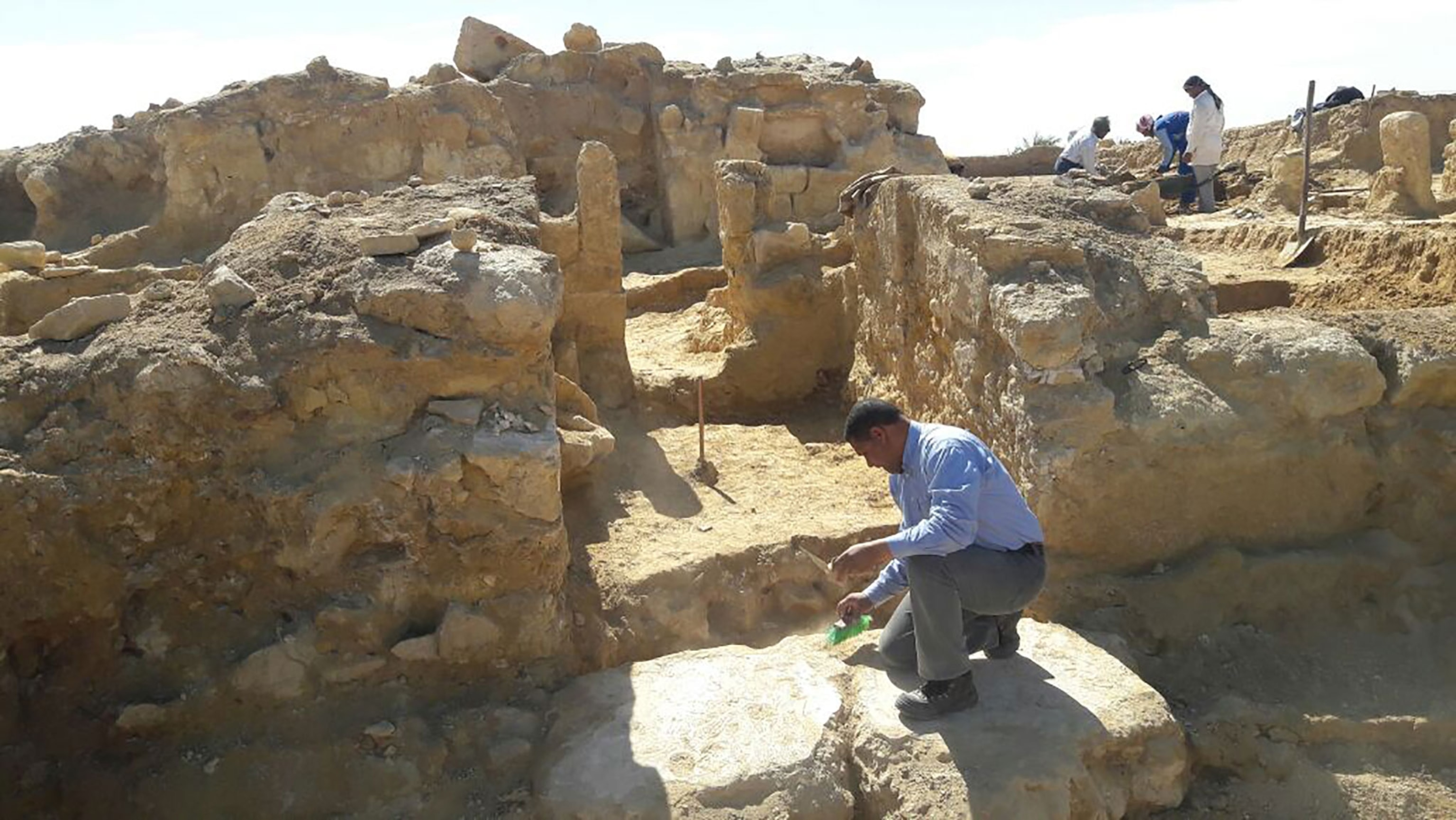
Greco-Roman Temple Unearthed in Egypt
A sculpture of a man's head and two limestone lion statues were among the artifacts uncovered at the archaeological site.
The Egyptian Ministry of Antiquities announced Wednesday that archaeologists have uncovered the remains of a Greco-Roman temple in Egypt's Western Desert. Found at the Al-Salam site, which is roughly 200 miles south of the Mediterranean Sea, the ruins include the front section of the temple and parts of its foundation and main entrance. The archaeologists also found a three-feet-thick outer wall leading to a front courtyard, which is surrounded on both sides by entrances to other chambers.
Ayman Ashmawi, the head of the Ministry's Ancient Egyptian Antiquities department, says the archaeologists expect to find more temple remains after other excavations are carried out later this year.
Once rubble had been removed from the site, which is located about 30 miles east of Siwa Oasis, head of the archaeological mission Abdel Aziz El-Demery says stones and architectural elements that had made up the temple's walls resurfaced, showing their Greco-Roman motifs. The temple's upper lintels and corner pillars are decorated with well-known designs like the egg-and-dart pattern, a molding design incorporating bas-relief ovals with pointed, narrow carvings.
The archaeologists also discovered fragments of pottery, coins, and a Greek-inspired sculpture of a man's head. They also uncovered two limestone lion statues, one of which is headless. (Related: "7 Ancient Mysteries Archaeologists Will Solve This Century")
Exciting Find
"What's amazing is you don't tend to hear every day of new temples found in Egypt," says Sarah Parcak, a space archaeologist and National Geographic explorer. "It's going to shed more light on the history of Siwa Oasis."
Located far out in the Western Desert, Siwa Oasis is remote. It's famous because Alexander the Great allegedly visited an oracle there who told him he was the divine king of Egypt.
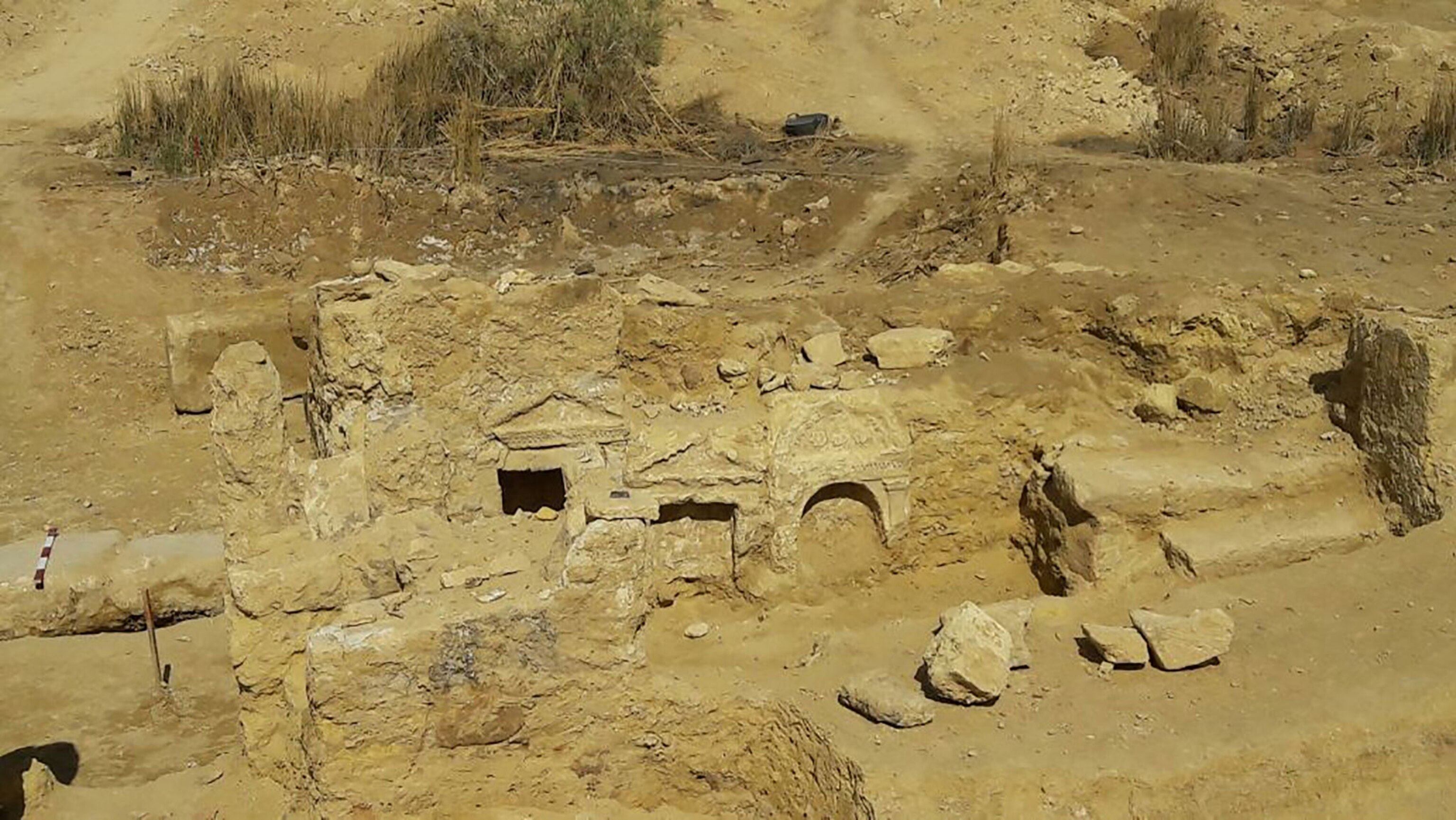
Based on the photos that have been released so far, it’s difficult to make out the overall size and extent of the temple and exactly when it was constructed, Parcak says. This discovery might provide some clues about Greco-Roman occupation and activities that took place in Egypt during this time. Not only were temples used as religious places, but they were also economic hubs where priests lived and locals visited.
"I'm hopeful that this excavation team is going to uncover the settlements or the houses of the priests," Parcak says. Such findings could also give some insight into ancient everyday life and the size of the population.
Timely Context
The Greek king Alexander the Great conquered Egypt in 332 B.C., bringing an end to Persian rule. After his death, control of Egypt fell to one of Alexander's generals, Ptolemy I Soter. Ptolemy then began a line of monarchs who would rule for the next 275 years, until the Romans took over from 30 B.C. and 395 A.D. (Related: "Jerusalem Dig Uncovers Ancient Greek Citadel")
Through the Greco-Roman period, ancient Egyptian religion—and its architecture—prevailed. People carried on building traditional Egyptian temples, and their Roman successors continued this. (Related: "Explore the Temples of An Ancient Greek Cult")
Although few ruins from the Greco-Roman period remain, their architectural legacy is lasting. Monuments erected by Macedonian rulers, like the Temple of Edfu on the west bank of the Nile, have Egyptian architectural conventions paired with Ptolemaic flourishes. For example, this temple's pillars are shaped like giant sistra—a type of Egyptian musical instrument—with elaborately composite capitals, monumental screen walls, and subterranean crypts. (Related: "Archaeologists Find a Classic Entrance to Hell")
Relief carving saw more Greek influence, rendering human representations—particularly the female form—in more generous styles. There was also a new emphasis on portraiture, which could be chalked up to influences from the Classical world or earlier Egyptian sculptural tendencies. Votive sculptures for private patrons were popular during the Ptolemaic period, but production declined and changed after the Roman conquest. (Related: "How the Greeks Changed the Idea of the Afterlife")
Parcak says it's also important that Egyptian archaeologists are making these discoveries, which speaks to the level of archaeological advancements coming out of the country.
"It's part of this narrative," she says. "We think we know so much about ancient Egypt, but there's so much of it left to find."



